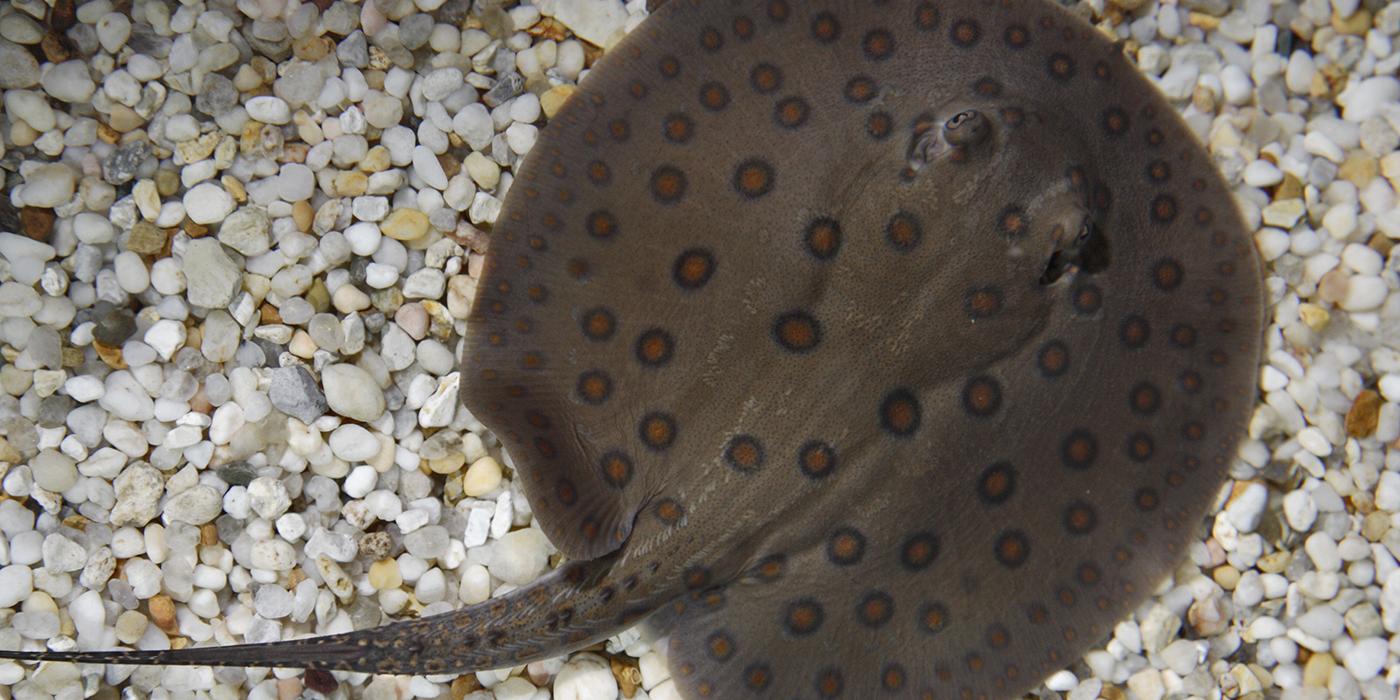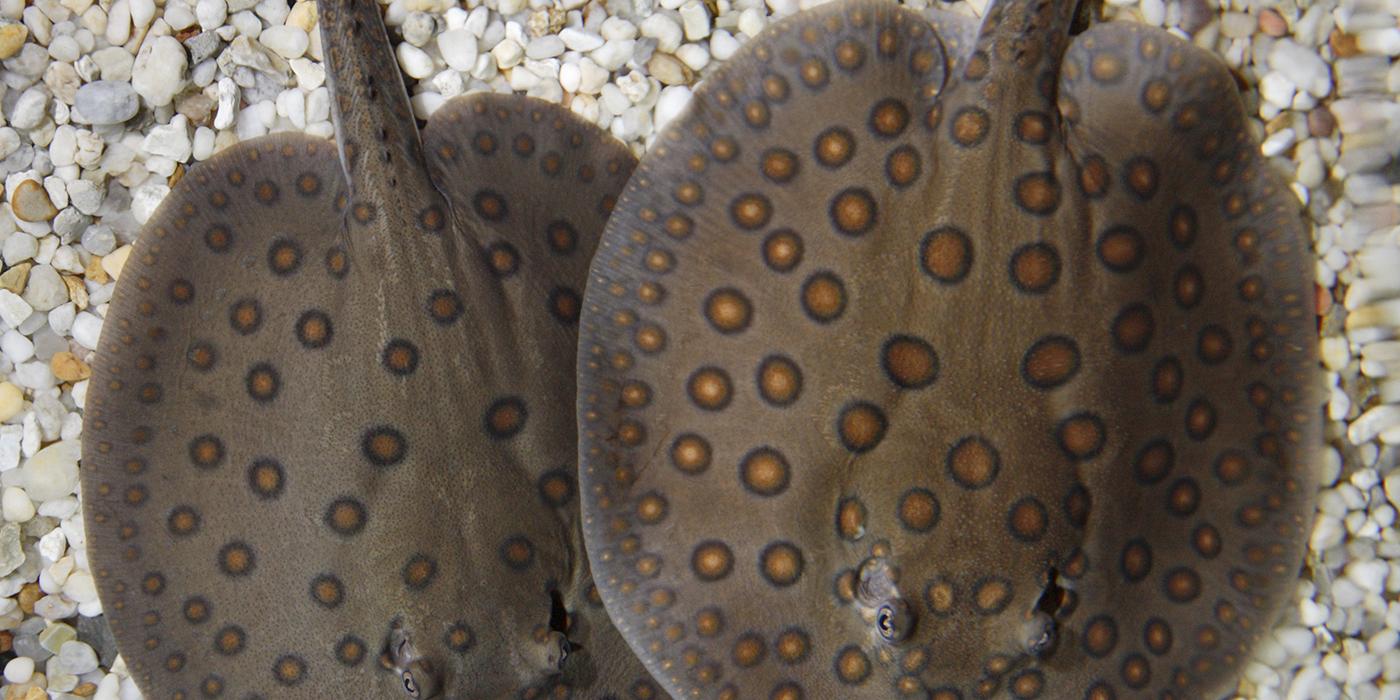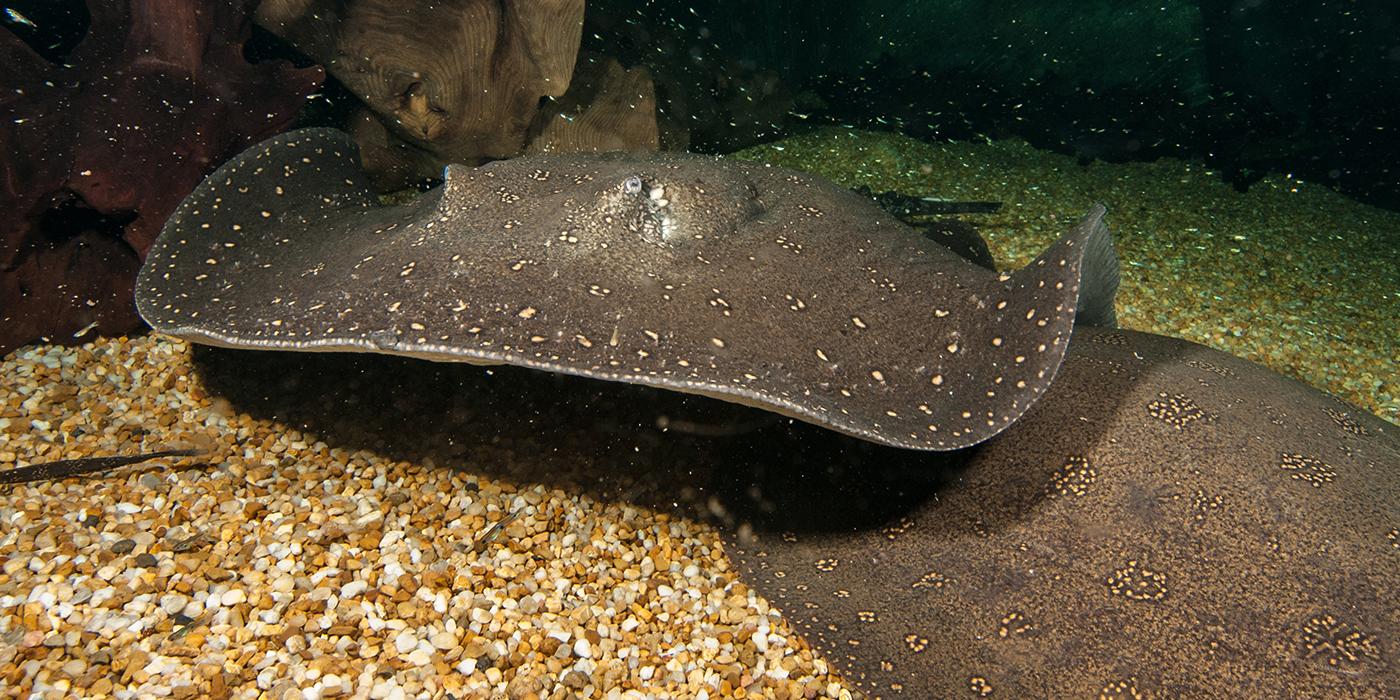Physical Description
These flattened fishes have eyes on the top of their bodies with mouths and gill slits on their undersides. Directly behind the eyes are spiracles, which are openings that allow for respiration. Their tails are typically longer than their disc width and usually have one or more long, saw-like spines behind the pelvic fin. Used for self-defense, the stinger is tipped with barbs that can rip through flesh when withdrawn. Each spine has grooves underneath that contain protein-based venom. The spines are constantly being shed and replaced, allowing the stingray to sometimes have two stingers as a new stinger grows in to replace the older one. Most South American species have colorful dorsal patterns that feature spots of different sizes and background colorings of gray, brown or black.
Size
Freshwater stingrays can grow to have a disc width of about 18 inches (46 centimeters). Their tails can reach up to 1 foot (30.5 centimeters) in length and an inch wide (2.5 centimeters).
Native Habitat
Freshwater stingray are native to South America. As their name implies, they live in fresh water in the Amazon. This is in contrast to most cartilaginous fish, which live in a salt water environment.
Lifespan
The lifespan of a freshwater stingray in the wild is currently unknown. In human care, they live between 5 and 10 years.
Food/Eating Habits
Freshwater stingrays eat crustaceans and other invertebrates. Their powerful jaws can easily crush the shells of clams and mussels, and they will occasionally eat small fish. At the Smithsonian's National Zoo, the stingrays eat shrimp, earthworms, smelt and an aquatic omnivore gel diet.
Reproduction and Development
Freshwater stingrays reproduce through internal fertilization. A male impregnates the female by using a modified pelvic fin as he bites the female's back. The unborn young are ovoviviparous, meaning they are nourished by egg yolk inside the mother's body. After a gestation period of three months, the female produces eggs that hatch internally before birth. The developing embryos receive additional nutrition from a milky, rich substance produced in the mother's uterus. About one litter of two to six pups is produced yearly. When it is born, a ray's disc is about 3 inches (8 centimeters) wide.
Conservation Efforts
Their conservation status is currently unknown. However, due to the fact that freshwater stingrays live in a concentrated environment, scientists believe they might be endangered. They are not typically hunted for food but are becoming popular in the aquarium trade.
Since 2002, the Zoo has been highly successful in breeding freshwater stingrays. The young stingrays are initially placed in 150-gallon "nursery tanks" until they reach a size where they can defend themselves, whereupon they are moved to a larger pool.
Stingrays at the Zoo are often sent to other sites around the country for breeding. Unlike other public aquariums, visitors cannot touch the stingrays at the Zoo, because they are capable of stinging; the Zoo does not cap, trim or surgically remove the stingrays' spines.
Help this Species
- Choose your pets wisely, and do your research before bringing an animal home. Exotic animals don’t always make great pets. Many require special care and live for a long time. Tropical reptiles and small mammals are often traded internationally and may be victims of the illegal pet trade. Never release animals that have been kept as pets into the wild.
- Share the story of this animal with others. Simply raising awareness about this species can contribute to its overall protection.





